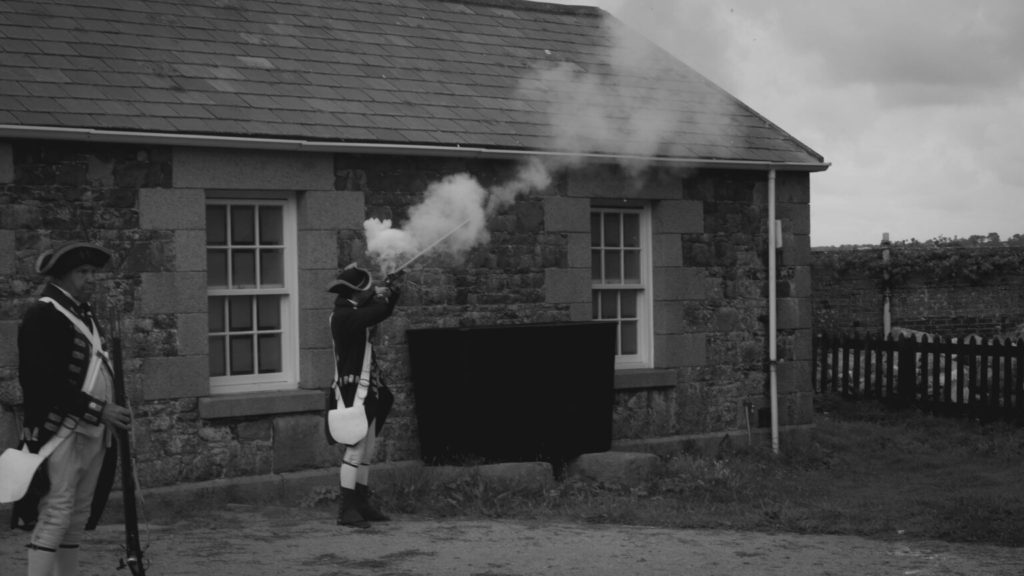Out of everything I have studied and responded to throughout this photography course femininity is the one I’m very passionate about and will continue to develop/expand my knowledge around this theme which will then allow me to interpret it in a creative way which I can then reflect that creativity into a photobook which ill design as my final project. When studying this theme in year 12 the aim was to find an artist that presented femininity as ‘innocent, young, caring, healthy’, Justine Kurland had produced some really good images which demonstrated those ideologies. However, to now develop this I will be producing images which will portray the opposite of those stereotypes, it will show how as girls specifically change (being older, meeting new people, understanding themselves, temporary happiness over long term happiness) focusing on all the problems/phases most teenage girls face. My photobook will have a nostalgic yet deep emotional feeling to it as it will show femininity in the past and what girls used to do when they were younger (nostalgic) and then compare that to how lifestyles change and how femininity is now interpreted, for me personally, and how things have changed (good and bad). I have already began forming a collection of pictures which ill use, mainly trying to get candid, random, raw images whenever I get a chance. I haven’t got a strict plan for where I will take my pictures, however, I know it will include a mix of candid and staged images… specifically documenting my friendship group and juxtaposing ‘girl pictures’ by Justine Kurland as her pictures had very bright colourful tones and majority of them where taken outside on fields, by lakes. Whereas my images will have more dark tones to create emotion and that sense of nostalgia from the past, its meant to demonstrate how girls change from what they used to do for fun in the past to what they now do for fun the difference is, is that the activities for young people to do in jersey are extremely limited now. My photobook will show what my friends and I do in our spare time and what its like to be a 17/18 year old girl in Jersey, juxtaposing with Justine Kurland’s images and story. Julia Margaret Cameron along side Justine Kurland is an artist I will also be including in my essay, Julia was the first photographer to capture femininity in 1868, this links to pictorialism.
All posts by Anna Schaffrath
Filters
Review & reflect/ personal study topic
1. Describe which themes (Nostalgia, Anthropocene, Home, Feminity/ Masculinity/ Identity etc,) medium (photography, film), approaches (documentary, tableaux, conceptual), artists (incl contextual references to art history, movements and isms) and photographic skills, processes, techniques and methods (incl learning new software) inspired you the most and why.
2. Include examples of both previous and current experiments and imagery to illustrate your thinking.
Anthropocene
The Anthropocene Epoch is an unofficial unit of geologic time, used to describe the most recent period in Earth’s history when human activity started to have a significant impact on the planet’s climate and ecosystems. I enjoyed learning about this topic as you could interpret it differently, for example, doing photoshoots of trees that have fallen down, electric towers, erosion. It meant I could experiment and had a wide choice of subjects I could photograph. I was able to demonstrate my skills using photoshop where I edited an electric tower, compared to the simple landscapes that I produced from these photoshoots. Axel Braun ( artist reference) collects case studies on contentious infrastructure projects in order to trace humanity’s development as a geological force. His studies focus on human-altered landscapes as by-products of discourses and processes that describe the techno sphere as it brings forth the Anthropocene. My response:






Overall I liked this topic as I was able to experiment a lot and capture the same (theme/idea) but completely different pictures. However, I wouldn’t continue to develop this particular topic as its quite simple and not as challenging as I wanted.
Femininity/Masculinity/Identity
Out of everything I have studied and responded to throughout this photography course this topic is the one I’m very passionate about and will continue to develop/expand my knowledge around this theme which will then allow me to interpret it in a creative way which I can then reflect that creativity into a photobook which ill design as my final project. When studying this theme in year 12 the aim was to find an artist that presented femininity as ‘innocent, young, caring, healthy’, Justine Kurland had produced some really good images which demonstrated those ideologies. However, to now develop this I will be producing images which will portray the opposite of those stereotypes, it will show how as girls specifically change (being older, meeting new people, understanding themselves, temporary happiness over long term happiness) focusing on all the problems/phases most teenage girls face. My photobook will have a nostalgic yet deep emotional feeling to it as it will show femininity in the past and what girls used to do when they were younger (nostalgic) and then compare that to how lifestyles change and how femininity is now interpreted for me personally and how things have changed (good and bad).
FINAL FILM: OCCUPIED
FILM VIDEO EDITING
THE APP USED TO EDIT OUR ELIZABETH CASTLE FILM; PREMIERE PRO.


The process in making the film was particularly difficult, Alice was using this software for the first time which meant she had to familiarise myself with the tools. Alice being the creator of the film making was tasked with adding creating the composition of the images/videos, the visual aesthetic, adding fading to the images, and making sure the audio was in the right place. Firstly she added our original image into a sequenced that we liked which also flowed better with a narrative, in order to add some history aspect to our film. According to Hesmondhalgh’s cultural industries theory producers use existing material so the audience can relate and minimise risk when releasing a product.
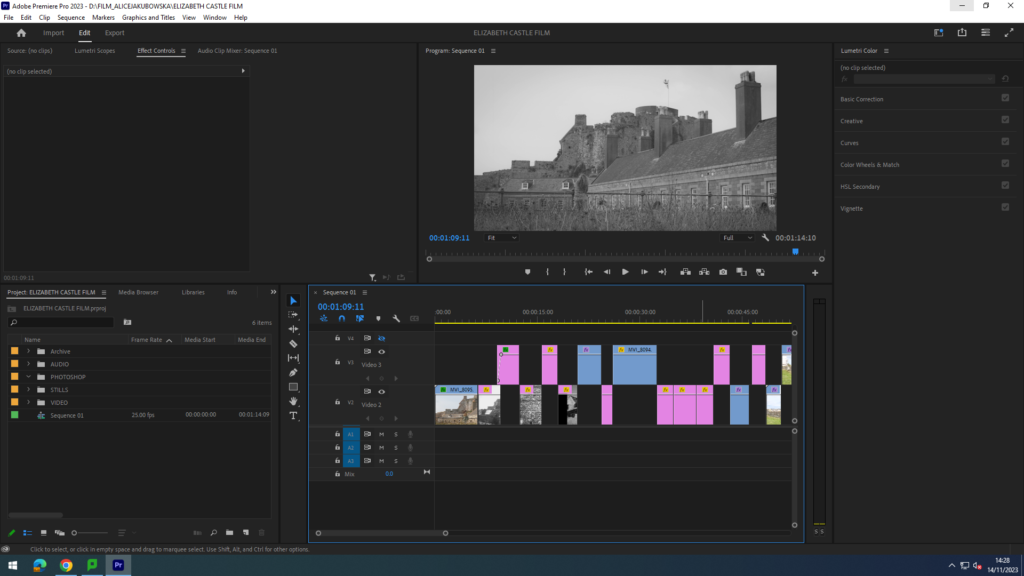
In this image you are able to see the sequencing of videos and images. To create a smooth film she tried to add similar images as to what you could see in the videos, sort of like a visual conclusion in what you saw in the short video. Furthermore with the archive images which i gathered she faded our original images into them to show the evolution and change you are able to see.


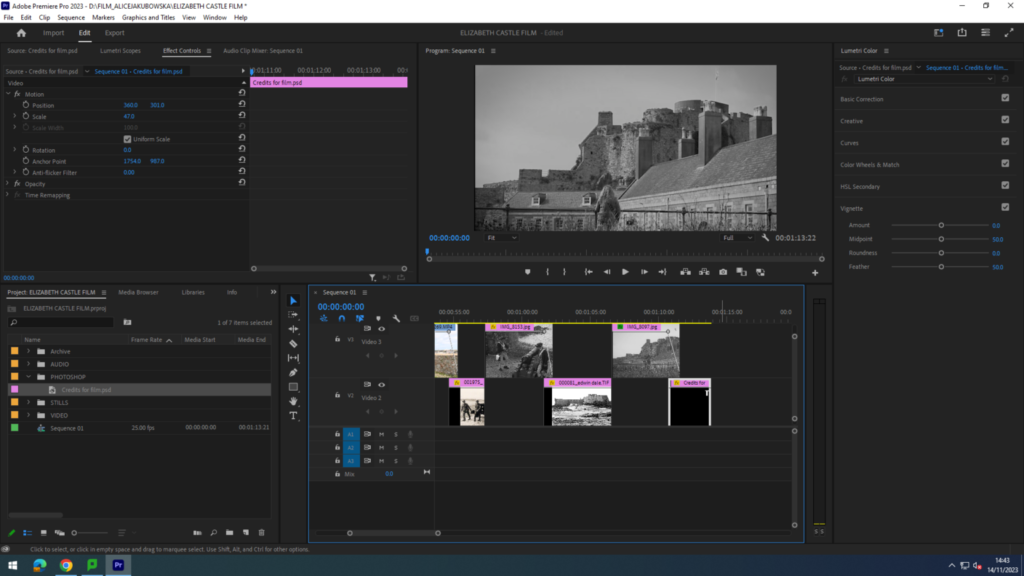
In this screenshot you are able to see a fade from one image to another. You can do this by slightly overlapping the two images and adding two key frames in the edge of each image. You are able to create different types of fades depending on how you position your images and the fade.
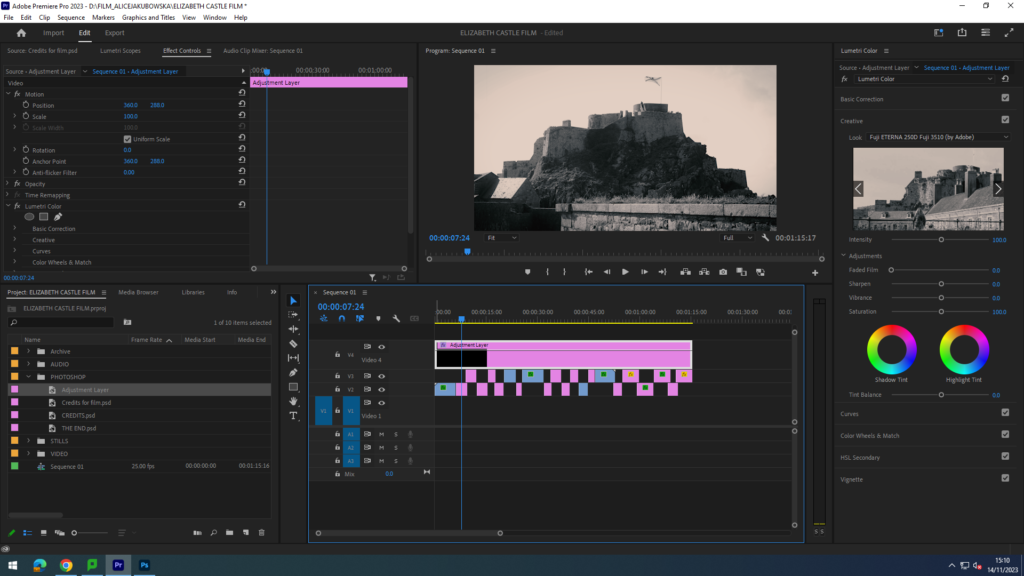
Here you are able to see the adjustment layer that is added on top of the sequence throughout the film. An adjustment layer, is an application of the same effect to a multitude of clips on your timeline. In the adjustment layer I added a black and white filter from the list of adobe filters, this was so the edited images and videos could have the same mood. However in order to make the archive images distinctive I added a different filter ‘Kodak Tobacco’ to create a more vintage old look. This filter had a gold/warm tone which seemed to look a bit like rustic paper used back in the day.
FILM PHOTO EDITING
THE APP USED TO EDIT OUR ELIZABETH CASTLE PICTURES; LIGHTROOM CLASSIC.

In this film we decided to create it black and white. This is so that the film could look more nostalgic and vintage. By creating this vintage look in the images we took at Elizabeth Castle they were able to fit with the aesthetic from the Jersey Archive images we received from Jersey Heritage. Our film was supposed to aim for Tourism attractions which therefore linked to the history of the grounds.
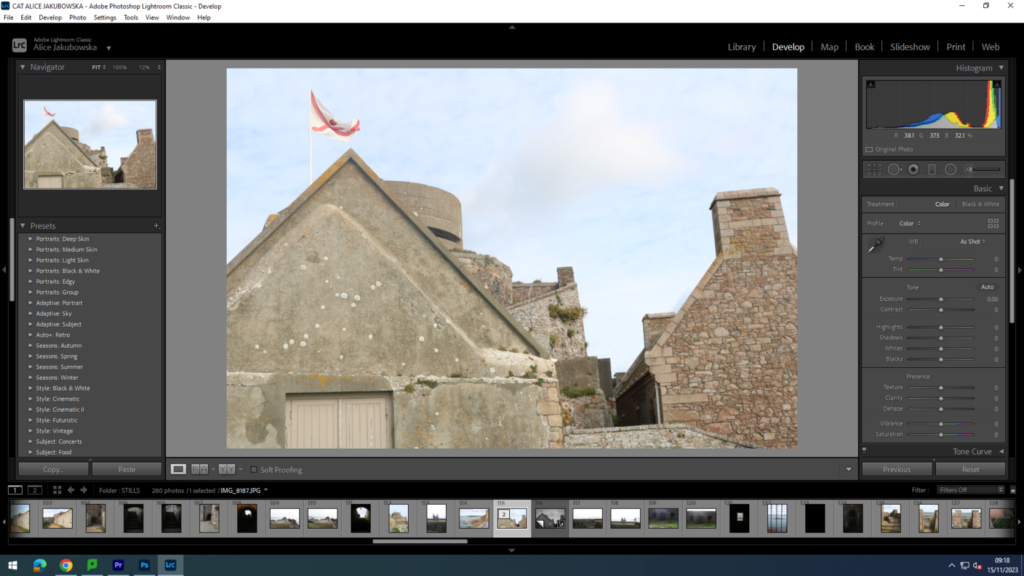
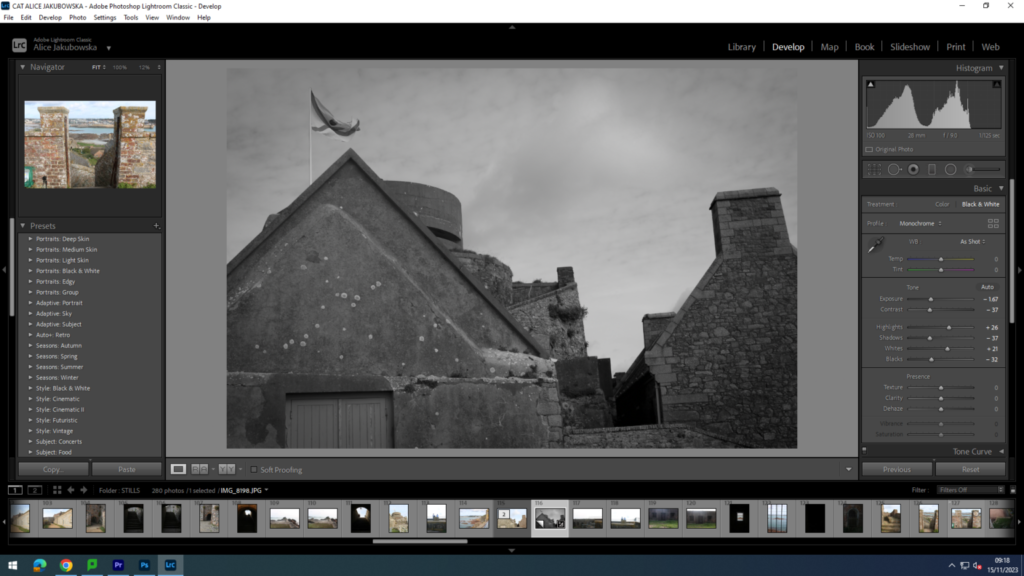
In the images we decided to created a dark atmosphere and vibe to the images, we achieved this decreasing the exposure and decreasing the blacks so we could have a darker mood. However we decided to give the image some dramatic look by contrasting the black and white tones, we further did this by increasing the white and decreasing the darks. Due to this there is a sharper contrast between the tones. To add a more dramatic effect to the images I added a slightly dark vignette around the image, however in order to create a natural aura to the image it was very minimal just enough to create some dimension to the image.
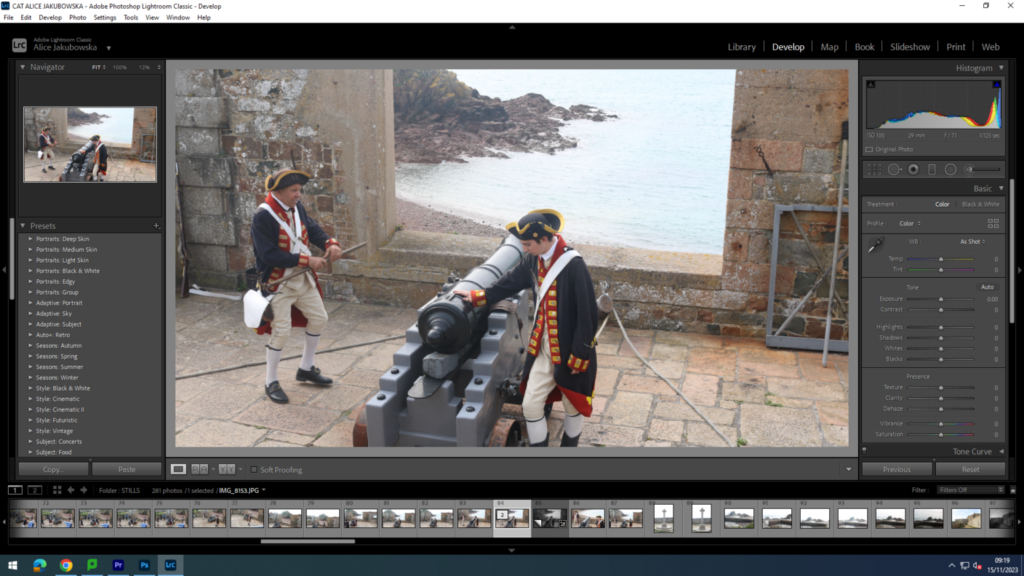
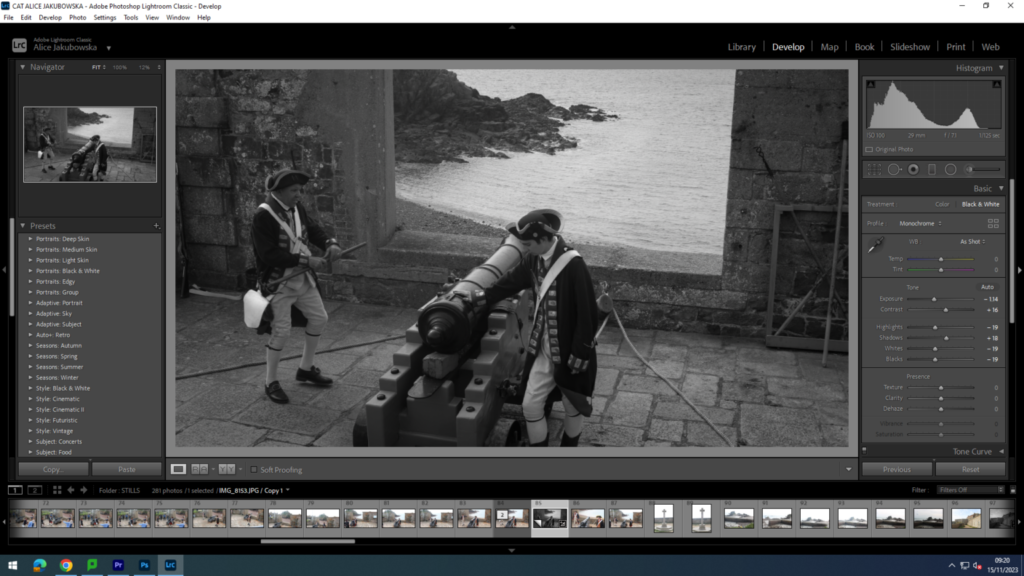
By developing this image in black and white it created a completely different visual look and emotion to the image. Black usually connotes darkness, death, and evil deeds this fits with the image as you are able to see soldiers about to fire from a canon. Which during that era was a deadly weapon that caused many soldiers from the oppositional group a painful death. Furthermore to darken the mood in the image I turned down the exposure to create a more depressed and deepen the mood already in the image. Furthermore I increase the white in order to increased the contrast in the soldiers outfits from the darkened background.
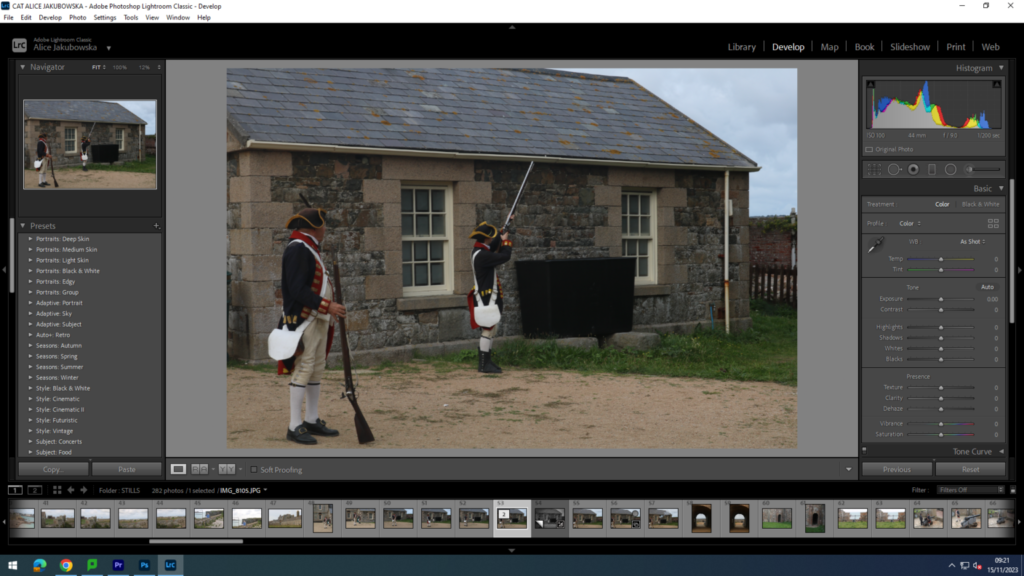
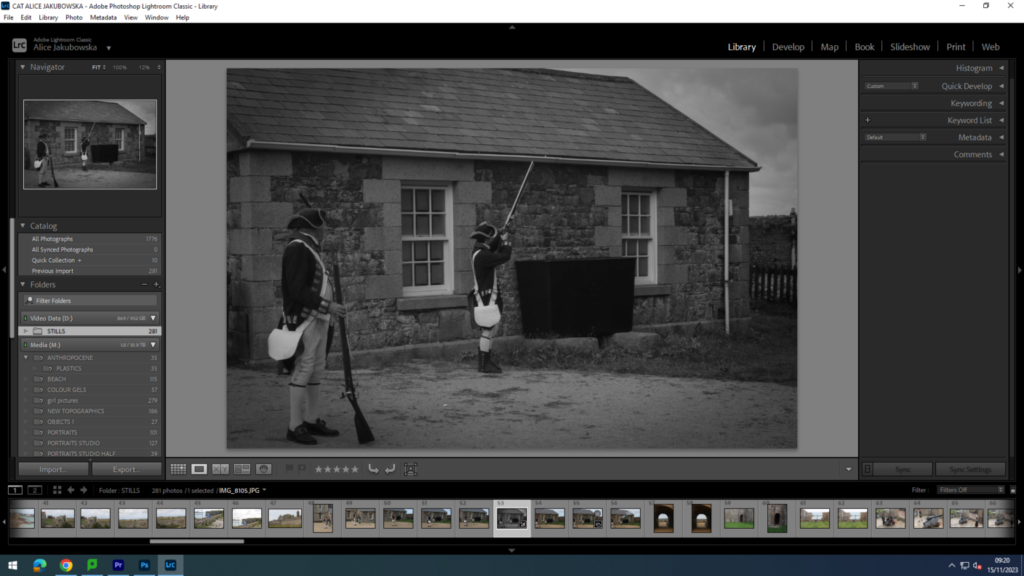
Continuing with the black and white filter I used a similar editing technique and in the image above in order to create a dark serious mood. This is to further support the sincere topic of gun firing, and some of the audience may be affected by this sort action eg post war, or family members in the army. In order to do this I decreased the saturation in order to create a dark mood and a sense of sad and ominous emotion for the viewers.
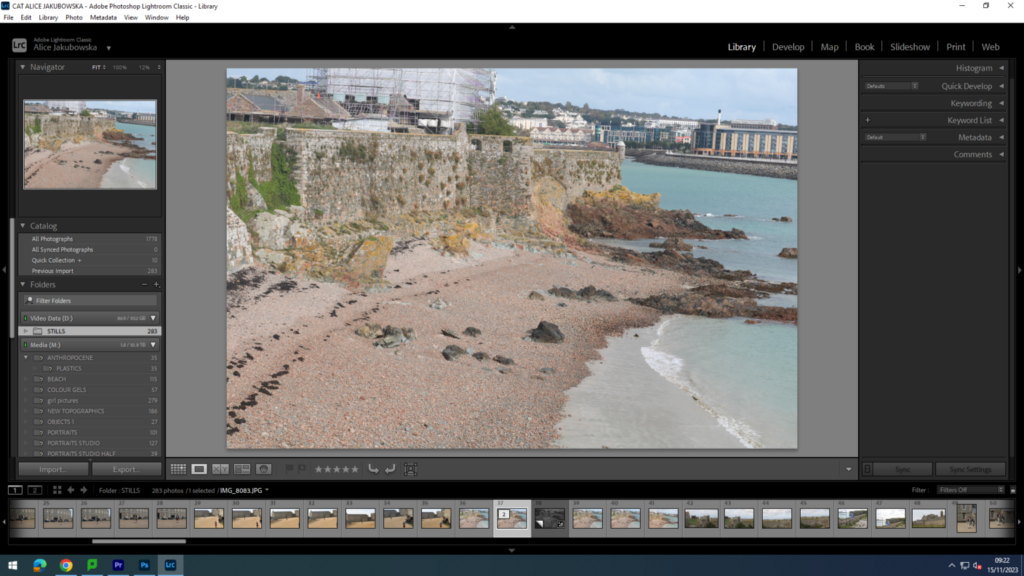
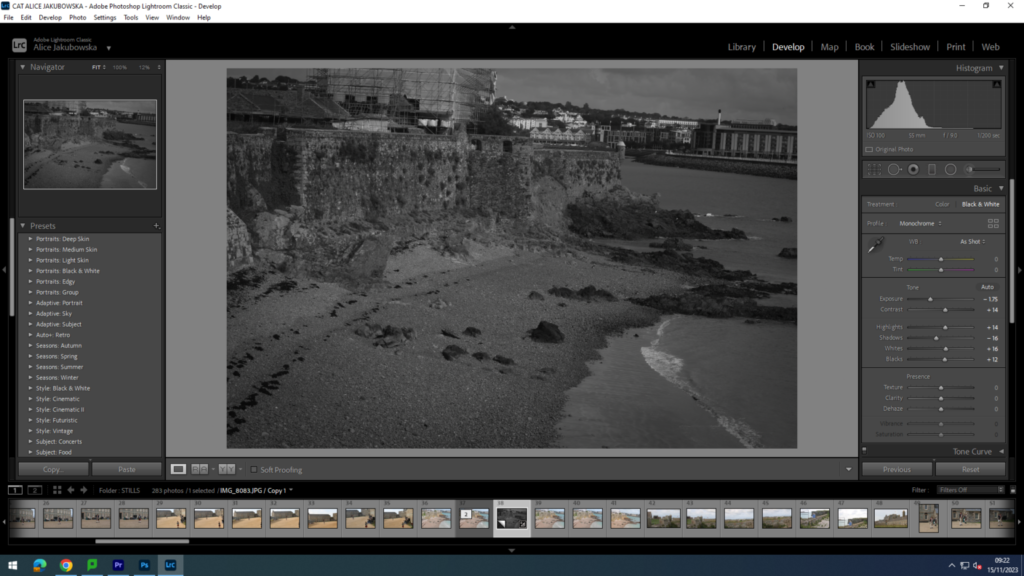
In this image you can see an establishing shot of the landscape in a hidden bit of the castle. This image was important to keep similar to the remaining images in order to keep the same mood through the film. The only different images that would stand out In the film would be the archival material provided by Jersey Heritage. This shot is one of the most important shots in the film as its shows the landscape and the area in which the movie is taking place, this shot therefore set the scene for the audience and creates an understanding of the environment.
FILM SOUND EDITING
To edit the sound in my film I used Adobe Audition. The class was given a workshop by Sam to demonstrate how to use this application when editing and creating soundscapes for the film. Hannah Fernandes was our audio editor in our group.
THE APP USED TO EDIT OUR ELIZABETH CASTLE SOUNDS; ADOBE AUDIOTION.

FREE SOUND WEBSITES PROVIDED:
https://sound-effects.bbcrewind.co.uk/

Sam, the provider of the workshop, prepared us a folder of sound material that he gathered from the trip to Elizabeth Castle. Majority of the sounds Hannah worked with were taken from this folder, as our film group did not have the equipment to gather our own material. However, Hannah used the audio from one of the videos captured for the canon fire. Using Adobe Audition, she was able to make it louder and clearer so it could be heard in the film.

Hannah used Sam’s materials to create the soundscapes. Using the combination of sound effects, seagulls and the sea, to create an establishing background noise for the film. This was to help establish the setting and surroundings at the beginning of the film. Hannah was able to take other sound effects from this too, for example rifle firings.

This folder included some dialogue clips recorded on the trip. They consist of recordings of demonstrations and other staff character commands. Hannah distributed a selected few of these clips across my film. She did this because the focus of our film was supposed to aim for Tourism attractions which therefore linked to the history of the grounds.

Furthermore Hannah gathered more sound effects from the Media Drive to expand our sound collection for the film. This includes the backing music for the film, called ‘Café del Mar – Terrace Mix 2’. However, the clip weren’t long enough for the entirety of the film. So, using Adobe Audition, she removed parts of the clip that weren’t useful and disliked by the group and duplicated it in order to extend the backing track to fit the film.
THIS IS SHOWN IN THE BELOW SCREENSHOT:
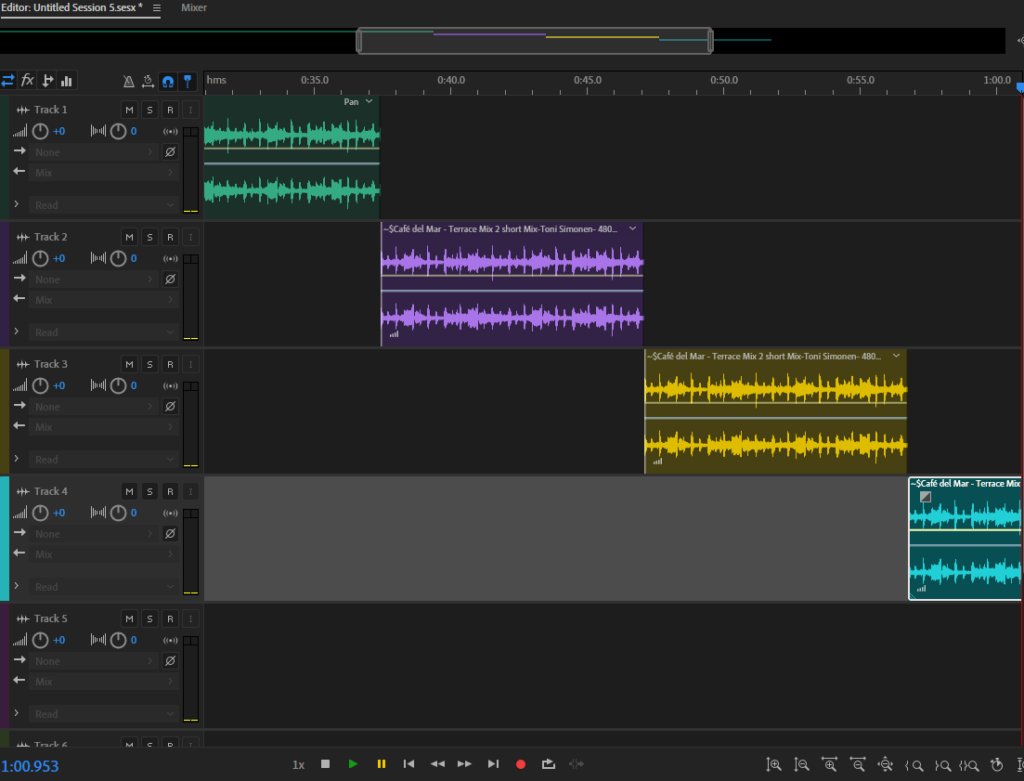

This is Hannah’s folder which was created for all the sound effects that would be used in the film eg: backing music, and Adobe Audition edits Hannah created. This was useful as it allowed our entire sound material to be transferred to the film editor’s computer. This then allows the film editor, Alice, to add in the sound clips to our film as the finishing touches.
BIBLIOGRAPHY:
BLOG POST CREATED BY HANNAH FERNANDES
CHRIS MARKER LA JETEE
La Jetee: mortality through photography….. an existentialist tale of doomed existence, inevitability, and predetermined death.
What is the story behind La Jetee?
La Jetee is about a man that is sent back and forth, in and out of time in an experiment that attempts to unravel the fate and the solution to the problems of a post-apocalyptic world during the aftermath of WW3. The experiment results in him getting caught up in a never ending memories of past events which are recreated on an airport’s viewing pier. What makes the film interesting for the purposes of this discussion, is that while in editing terms it uses the language of cinema to construct its narrative effect, it is composed entirely of still images showing images from the featureless dark of the underground caverns of future Paris, to the intensely detailed views across the ruined city, and the juxtaposition of destroyed buildings with the spire of the Eiffel Tower.

Chris Marker (Christian François Bouche-Villeneuve) was born in 1921 at Neuilly sur Seine, France, and died in 2012 and was a French filmmaker, poet, novelist, photographer, editor and multi-media artist who has been challenging moviegoers, philosophers, and himself for years with his complex queries about time, memory, and the rapid advancement of life on this planet. He fought for the French resistance during World War II and enlisted as a Paratrooper in the United States Air Force. In the 1950s Marker wrote for l’Esprit and Cahiers du cinéma and was an assistant to Alain Resnais. His work was been presented internationally. Marker was the subject of a film retrospective at The Museum of Modern Art, New York, and was a featured artist of the exhibition Passage de l’image at the Centre Georges Pompidou, Paris, and Documenta X, Kassel, Germany. In 2018 he had a screening at Cannes Film Festival, won the International Critics Prize, and had a major retrospective in Paris. Marker’s La Jetée is one of the most influential, radical science-fiction films ever made, a tale of time travel.

Story Board Elizabeth castle

The last two scenes will be of history within the castle however don’t want to create a plan for them yet as want to have flexibility with what we film instead of a strict plan. However knowing it will be of the history in the castle will guide us to get some appropriate fitting shots for the film. Within my story board I have included using the photo archives from jersey archives, to do this I had to use the website and do some research to find the best fitting archive to use in our film.
Elizabeth castle mood board
RESEARCH ON: post-war tourist attraction, current site of Jersey Heritage and living history.

RESEARCH ELIZABETH CASTLE
Built on a rocky islet in St Aubin’s Bay, Elizabeth Castle has defended Jersey for more than 400 years. You can take the amphibious Castle Ferry or walk out along the causeway at low tide. Elizabeth Castle is the perfect place to spend a day exploring Jersey’s history.
Theme for the film: Post-war tourist attraction, current site of Jersey Heritage and living history.
SYNOPSIS:
The short film we will be producing at Elizabeth Castle will be about the post historic events and the tourist attractions. The short film will include pictures of the main historic parts such as the; canons, the structure of the castle, and the main outside area (the layout). This short film is to show the evolution of the castle and how it once gave refuge to King Charles II and has now become open to the public and marked as one of the most historic elements on the island.
About Elizabeth castle
To reach the Castle and begin your adventure, walk along the causeway or take the amphibious Castle Ferry. Spend your day exploring this sprawling 15-acre fortress: climb the battlements dating back to the time Sir Walter Raleigh was Governor of Jersey; explore the grounds that gave refuge to King Charles II during the English Civil War; uncover the story of the Castle during the German Occupation in World War II; then discover the oldest part of this site, The Hermitage, where Saint Helier is thought to have lived around 550 A.D.
A bit of history on the castle:


After gathering some research and looking at reviews tourists have put about Elizabeth castle it has made it clear to me what attracts tourists the most… therefore I know what to include in my film to ensure the target theme, which is post war tourist attraction, is accurate. One of the most important things being trying to include as much history to draw in the tourists.

